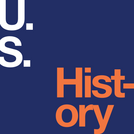25 Results
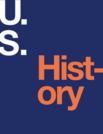
U.S. History is designed for a two-semester American history sequence. It is traditional in coverage, following a roughly chronological outline, and using a balanced approach that includes political, economic, social, and cultural developments. At the same time, the book includes a number of innovative and interactive features designed to enhance student learning. Instructors can also customize the book, adapting it to the approach that works best in their classroom.
- Subject:
- Social Science
- Material Type:
- Module
- Author:
- OpenStax College
- Date Added:
- 07/18/2021
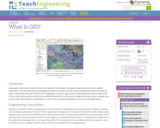
Geographic information systems (GIS) are important technology that allows rapid study and use of spatial information. GIS have become increasingly prevalent in industry and the consumer/internet world in the last 20 years. Historically, the basis of GIS was in mapping, and so it is important to understand the basis of maps and how to use them as well as why they are different from GIS. In this lesson, students learn the value of maps, how to use maps, and the basic components of a GIS. They are also introduced to numerous GIS applications.
- Subject:
- Applied Science
- Engineering
- Material Type:
- Lesson Plan
- Provider:
- TeachEngineering
- Provider Set:
- TeachEngineering
- Author:
- Andrey Koptelov
- Nathan Howell
- Date Added:
- 09/18/2014
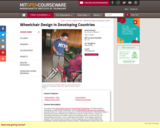
According to the United States Agency for International Development, 20 million people in developing countries require wheelchairs, and the United Nations Development Programme estimates below 1% of their need is being met in Africa by local production. Wheelchair Design in Developing Countries (WDDC) gives students the chance to better the lives of others by improving wheelchairs and tricycles made in the developing world. Lectures will focus on understanding local factors, such as operating environments, social stigmas against the disabled, and manufacturing constraints, and then applying sound scientific/engineering knowledge to develop appropriate technical solutions. Multidisciplinary student teams will conduct term-long projects on topics such as hardware design, manufacturing optimization, biomechanics modeling, and business plan development. Theory will further be connected to real-world implementation during guest lectures by MIT faculty, Third-World community partners, and U.S. wheelchair organizations. This class is made possible by an MIT Alumni Sponsored Funding Opportunities grant with additional support from the National Collegiate Inventors and Innovators Alliance, the MIT Public Service Center, and the MIT Edgerton Center; special thanks to CustomInk.com.
- Subject:
- Applied Science
- Career and Technical Education
- Engineering
- Health, Medicine and Nursing
- Manufacturing
- Material Type:
- Full Course
- Provider:
- M.I.T.
- Provider Set:
- M.I.T. OpenCourseWare
- Author:
- Smith, Amy
- Winter V, Amos G.
- Date Added:
- 01/01/2009
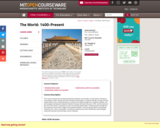
This course surveys the increasing interaction between communities, as the barrier of distance succumbed to both curiosity and new transport technologies. It explores Western Europe and the United States' rise to world dominance, as well as the great divergence in material, political, and technological development between Western Europe and East Asia post–1750, and its impact on the rest of the world. It examines a series of evolving relationships, including human beings and their physical environment; religious and political systems; and sub-groups within communities, sorted by race, class, and gender. It introduces historical and other interpretive methodologies using both primary and secondary source materials.
- Subject:
- Arts and Humanities
- History
- World History
- Material Type:
- Full Course
- Provider:
- M.I.T.
- Provider Set:
- M.I.T. OpenCourseWare
- Author:
- Anne McCants
- Jeffrey S. Ravel
- Date Added:
- 01/01/2014
